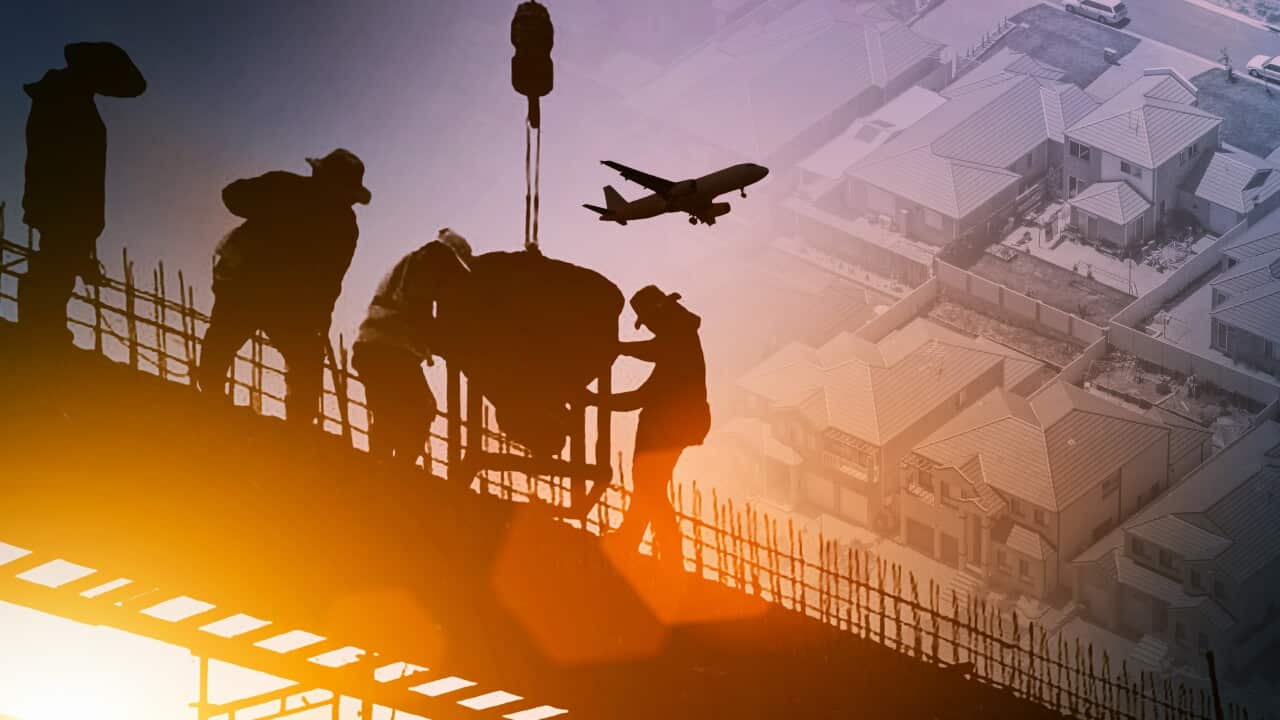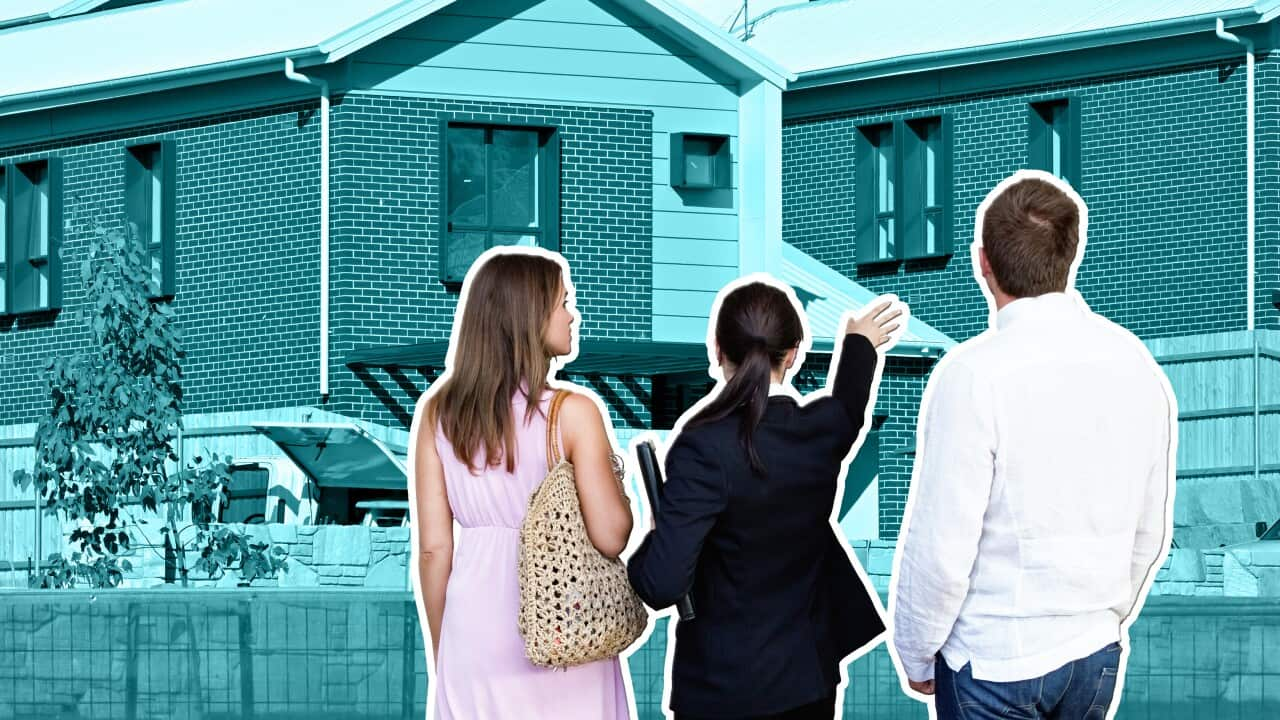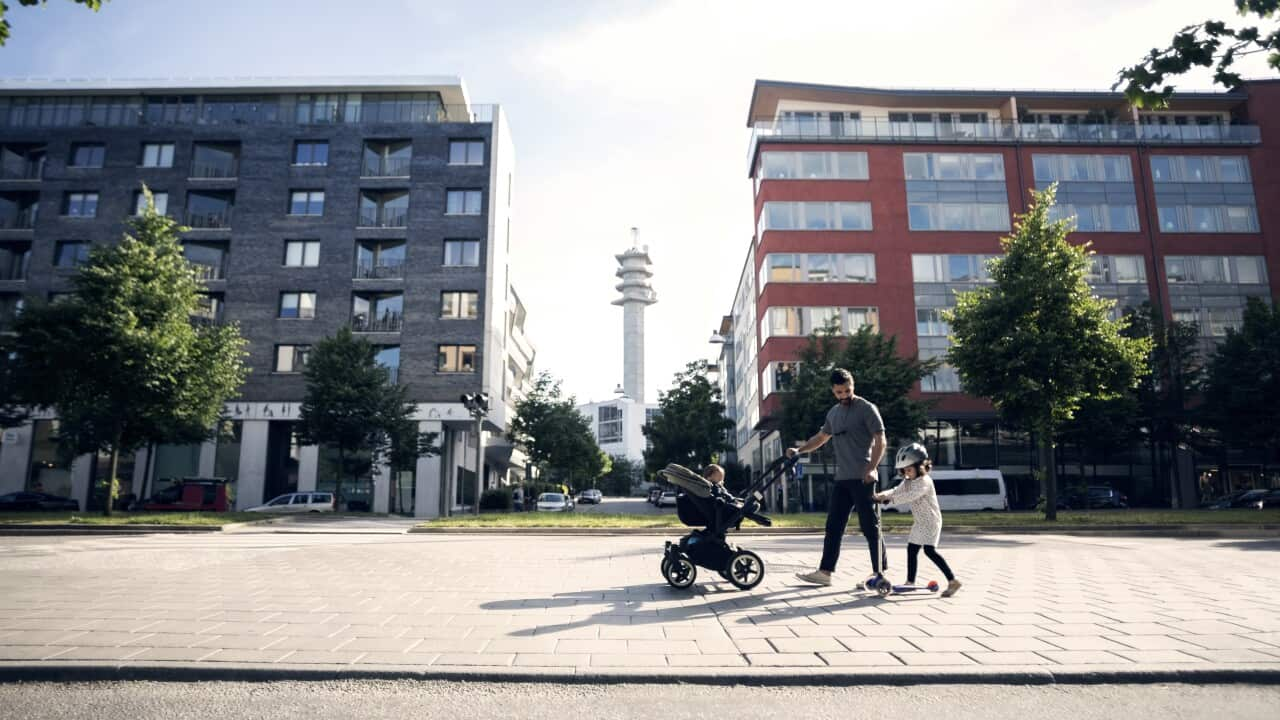Australia's housing crisis has been a key focus in pitches to voters during the federal election campaign, with a particular emphasis on first-home buyers.
But whether you rent or buy, the Grattan Institute says the lack of housing affordability is exacerbated by one key issue: the lack of supply.
Brendan Coates, program director of housing and economic security at Grattan Institute, said: "We've not built enough housing to meet the needs of our growing population."
"That is largely because state land use planning regimes have made it too hard to build more homes in the established suburbs of our major cities," he told SBS News.
Last year, Master Builders Australia said building the average house had blown out from nine months to 12.7 months — a 40 per cent increase — since 2010-11.
In areas closer to the city, it said the slow pace of development applications and height and density restrictions placed on big developments were part of the "red tape" slowing down construction.
While the biggest levers for boosting construction sit with state and territory governments, which oversee planning and building regulations, Coates argues the Commonwealth still plays a role in increasing housing supply.
Experts have weighed in on how the major parties are addressing bottlenecks in the industry and increasing supply, as well as what more needs to be done.
What have the major parties pledged on housing?
A quick recap of the main housing pitches to voters from the major parties:
Labor
- Will expand the First Home Guarantee scheme and the Help to Buy shared equity loan scheme, both of which will allow first-time home buyers to buy a home with a deposit of 5 per cent or less. However, the latter gives the government a 30 to 40 per cent stake in your home.
- Build 100,000 new affordable homes exclusively for first home buyers, with construction starting in 2026/27.
- Provide a $10,000 incentive for apprentices in housing construction — paid in instalments — in a bid to speed up the construction of homes.
- Aim to deliver 55,000 social and affordable homes over five years under the Housing Australia Future Fund — which will be scrapped by the Coalition.
Coalition
- First home buyers will be able to access $50,000 of their superannuation for a deposit.
- They will also be able to claim tax deductions on interest payments against the first $650,000 of their mortgage in the first five years.
- A $5 billion fund to build infrastructure such as sewerage and water will be set up to support the construction of 500,000 new homes.
- Businesses that employ apprentices in areas with a skills shortage can receive a payment of $12,000 per year for the first two years.
- The Coalition believes cutting migration will alleviate pressure on the housing market, pledging to reduce net migration levels by 100,000 places.
What effect will these policies have on supply?
Dr Liam Davies, a lecturer in urban planning and sustainability at RMIT University, said both major parties are tackling supply through different approaches.
He told SBS News the Liberal Party wants to ensure the right infrastructure is in place ahead of development, through its $5 billion fund.
Alternatively, Labor would facilitate supply by actively intervening in the market, directly funding projects like 100,000 homes for first-time buyers.
Are we on track to build enough homes?
In August 2023, the National Cabinet agreed on a target of building 1.2 million "new, well-located homes" across the country by 2029.
To achieve the target, 60,000 homes need to be built every quarter. In 2024, roughly 45,000 houses and units were built each quarter — a total of 181,789, according to the Australian Bureau of Statistics.
The Grattan Institute estimates the target is unlikely to be met, forecasting 900,000 homes will be built over the five years.

In 2024, roughly 45,000 houses and units were built each quarter — a total of 181,789, according to the Australian Bureau of Statistics. Source: SBS News
"There's not really a real incentive for the states to act to get more housing built, because even if they do, they will struggle to meet that baseline of one million homes, let alone the 1.2 million," he said.
"So we need to revise that target down, that baseline down, so that states start to qualify for the $15,000 [per home] if they do act."
What else can government do to speed up development?
"There hasn't been a harder time to build more housing anytime in the last 20 years," Coates said, attributing this to a spike in construction costs, interest rates making financing projects more difficult, and shortages in skilled labour.
He said the federal government could "speed the process up" by getting more skilled migrants into the country and financing new construction — acknowledging the latter is part of Labor's pitch.
Denita Wawn, CEO of Master Builders Australia, estimates the industry needs roughly 200,000 more workers to meet demand. She has repeatedly called for the fast-tracking of tradie visas, warning the gap cannot be met domestically alone.
"We know there's at least 20,000 skilled migrants in the country at the moment that are finding it difficult to get their skills recognised and undertake their gap training," she told SBS News.
Labor has since announced it will fast-track the qualification of at least 6,000 tradies already in the industry through a $78 million program that will help recognise prior learning and identify gaps for further training, which will be offered for free.
Wawn said Labor's pilot program is not enough to compete with priority pathways offered by other countries, urging both parties to clearly lay out their skilled migration strategies to voters ahead of 3 May.
"Where both parties have let us down is [there's] really no policies on the issue around skilled migration," she said.
On Thursday, Opposition immigration spokesperson Dan Tehan said to permanent migration.
Wawn did note that the Coalition were "ahead" of Labor when it came to apprentices, "given that they've made a commitment to employer incentives as well as employee incentives".
She was referring to a two-year incentive pledged by the Coalition for businesses that hire apprentices in areas with a skills shortage, and its support for Labor's $10,000 apprenticeship program.

Master Builders Australia says more skilled workers are key to expediting the building of houses.
Wawn acknowledged Labor is the only party to mention working in collaboration with states and territories to address the issue of housing.
However, she credits the Coalition with having a "deregulation focus". In March, Opposition Treasury spokesperson Angus Taylor committed to establishing a productivity taskforce to assess the cost of regulation and how to reduce red tape.
Wawn concludes the parties are "neck-and-neck" at the moment, but argues the 1.2 million build target is achievable if these issues are addressed.
Where should we be building homes?
From a planning perspective, Davies said homes need to be built near infrastructure and utilities — including parks, schools, hospitals — and conducive to people having socially engaged lives.
You can achieve this by either developing areas near existing infrastructure, or by building infrastructure to allow easier access to greenfield sites, which are undeveloped plots of land typically on the outskirts of urban areas, he said.
"If you want to live in an urban area, the Labor policy may suit your lifestyle slightly better," he said.
"If you want to live in an outer suburban area, the Liberal Party policy may suit your lifestyle slightly better."
He argues while both are crucial, the government needs to focus on diversifying the type of homes being built. He highlights there is a gap for family homes — three or four-bedroom apartments — in urban areas.
Which party will boost home ownership?
Coates said first home buyers on lower incomes will be able to buy homes they might not otherwise have access to, through Labor's first home buyer guarantee and shared equity schemes.
But high-income earners, who are more likely to be able to buy a home, will be the greatest beneficiaries of the Coalition's tax deduction on existing mortgages scheme.
"Labor is more likely to boost the rate of home ownership. The Coalition will allow wealthier people to buy bigger homes than otherwise."
Visit the to access articles, podcasts and videos from SBS News, NITV and our teams covering more than 60 languages.







